Junagarh Fort, Bikaner, Rajasthan, is a stunning example of ancient Indian architecture. Built in the late 16th century, it is popular for its robust structure and intricate detailing. Unlike many forts in Rajasthan, this fort was never taken into custody, which adds to its historical significance. Visitors can explore its expansive courtyards, grand palaces, and temples. The fort houses a museum, which displays an impressive collection of artefacts, offering insight into the history of Rajasthan’s royal families.
Location
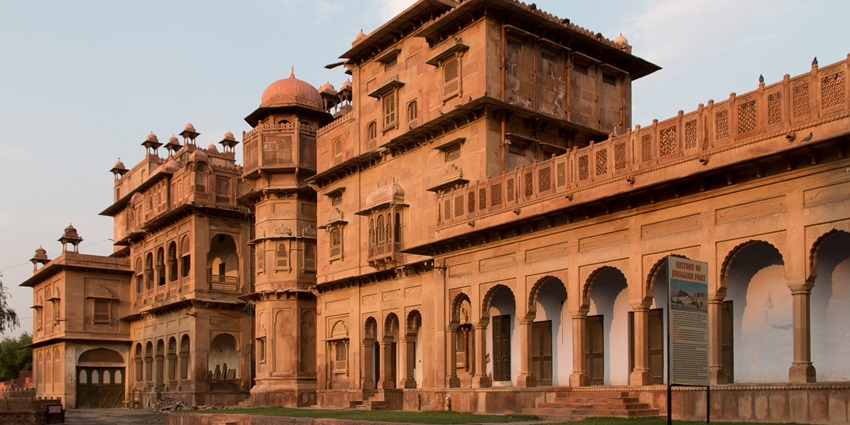
Photo: Daniel VILLAFRUELA / Wikimedia Commons
Situated in Bikaner, Rajasthan, right on the Thar Desert’s periphery, the location of Junagarh Fort makes it easily accessible for tourists from nearby cities like Jodhpur and Jaipur. Surrounded by desert terrain, the fort presents a unique contrast with its sturdy red sandstone walls. Its location within Bikaner makes it a perfect hub for those looking to explore the city’s rich history and other nearby attractions.
Suggested Read: Remarkable Bikaner Forts For The Ultimate Historical Experience
How To Reach
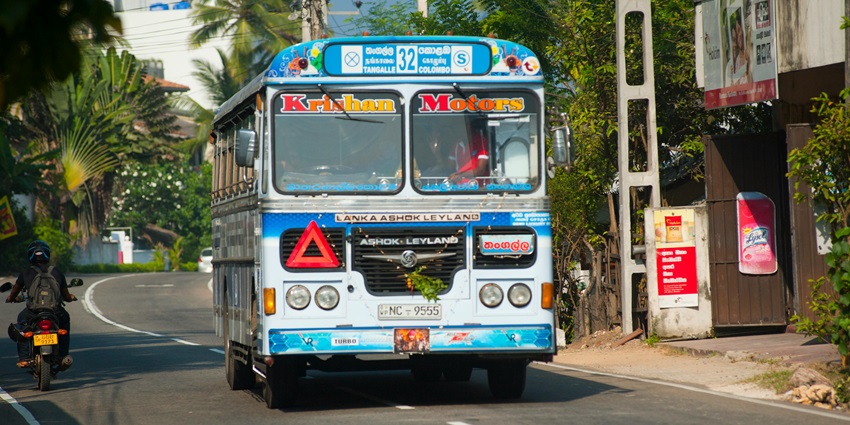
Photo: Oleksandr P / Pexels / Image For Representation Only
By Road: Travelling by bus is a budget-friendly option to reach the fort. The city of Bikaner has a well-connected network of government and private buses from various cities across Rajasthan. The bus station is about 2 km from the fort, making it a short ride or walk to the destination. If you prefer a more comfortable mode of transport, hiring a taxi is a great option. Taxis are available from the Bikaner Railway Station and city centre, offering a convenient way to explore not only the fort but also the surrounding attractions.
By Rail: Bikaner Junction, the main railway station, is around 3 km from the fort. The station is connected to major cities in India such as Delhi, Jaipur, and Jodhpur. Once you arrive, auto rickshaws and taxis are readily available to take you to the fort. For people travelling from other cities wondering how to reach Junagarh Fort, this is the best way to travel to this attraction.
Places To Visit Around Junagarh Fort
Do consider exploring these nearby attractions near the fort for a more compelling excursion.
1. Ganga Singh Museum
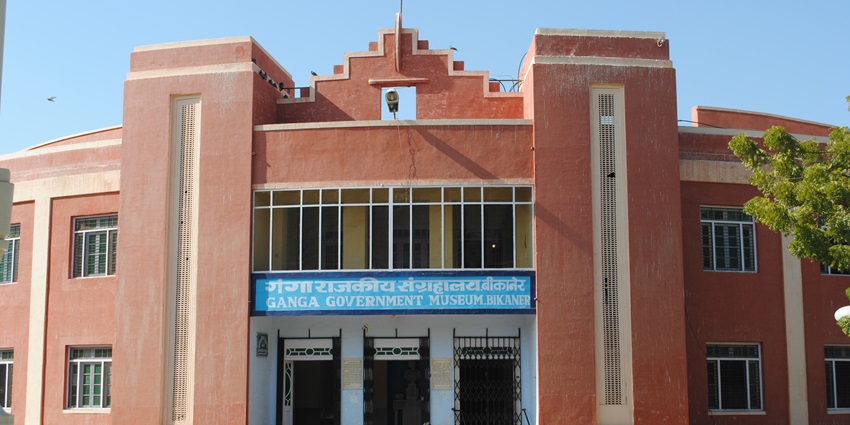
Photo: Schwiki / Wikimedia Commons
The Ganga Singh Museum showcases an extensive collection of artefacts from Rajasthan’s rich past, including relics from the Harappan era. Visitors can explore ancient sculptures, pottery, and artwork that reflect the region’s cultural heritage. The museum also features exhibits from the Gupta and Kushan periods, offering insight into India’s history. It is a notable spot for those interested in archaeology and local traditions. With well-preserved artefacts, the museum presents a window into Rajasthan’s glorious historical narrative.
Distance From The Fort: 2 km
Timings: 10 AM – 5 PM
Suggested Read: Bikaner Museums
2. Karni Mata Temple
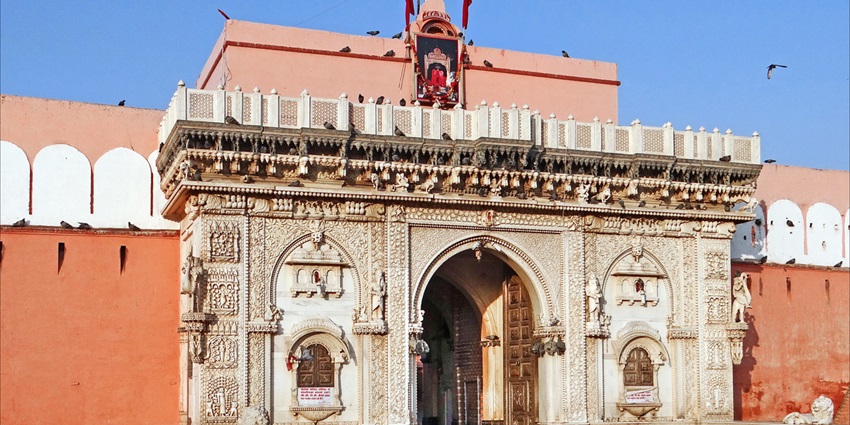
Photo: Jean-Pierre Dalbéra / Wikimedia Commons
The Karni Mata Temple, located near Bikaner, is known for its distinctive tradition of revering rats, which are considered sacred by devotees. Visitors can observe these rodents freely roaming the temple complex, being fed and cared for by the faithful. Legend states that the rats are reincarnations of devotees, adding spiritual significance to the temple. Pilgrims and tourists are drawn to this unusual site, with its captivating rituals and the deeply rooted beliefs that surround the temple’s origin.
Distance From The Fort: 30 km
Timings: 5 AM – 10 PM
3. Lalgarh Palace
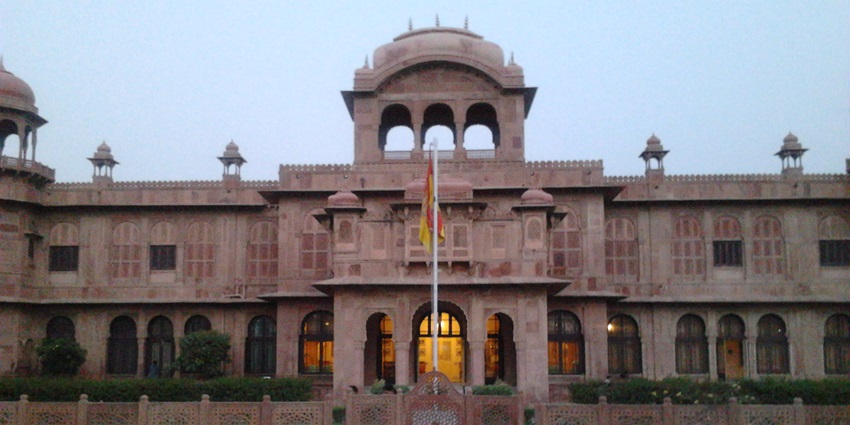
Photo: Honika Pareek / Wikimedia Commons
Lalgarh Palace, a masterpiece built by Maharaja Ganga Singh, blends European elegance with Rajputana grandeur. Its intricate stone carvings, grand corridors, and sprawling lawns make it an architectural gem. The palace now functions as a heritage hotel and museum, offering guests a glimpse of the opulence that once defined Rajasthan’s royal life. Visitors can explore the palace’s expansive galleries that house royal artefacts, while the gardens provide a scenic spot for relaxation. It’s an ideal destination for those interested in regal architecture and history.
Distance From The Fort: 3 km
Timings: 10 AM – 5 PM
Suggested Read: Discover Fascinating Places To Visit In Bikaner For A Cultural Retreat
4. Bhandasar Jain Temple
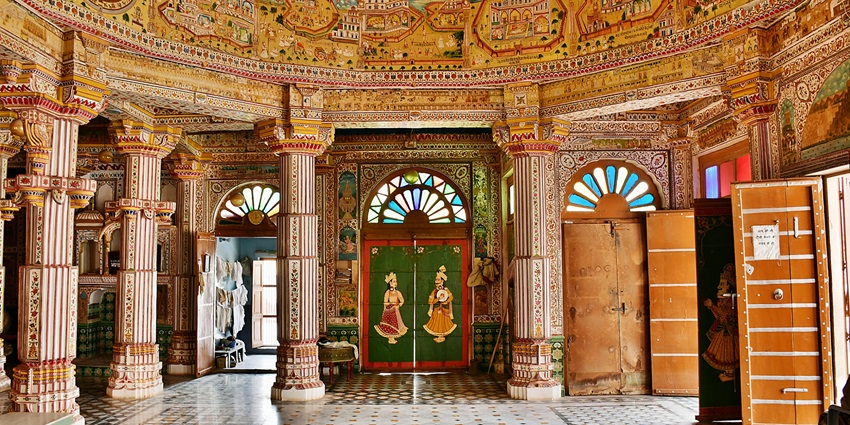
Photo: Malakarmithun / Wikimedia Commons
The Bhandasar Jain Temple, built in the 15th century, is popular for its intricate artistry and religious importance. The temple’s interiors boast vibrant murals and delicate frescoes, each telling a story from Jain teachings. Its three-story structure adorned with fine details in gold leaf add to its historical and architectural allure. This site is perfect for visitors who are fascinated by ancient Indian craftsmanship and the spiritual significance of Jainism, offering a quiet setting for reflection and exploration of its remarkable artistry.
Distance From The Fort: 2.5 km
Timings: 5 AM – 1 PM and 5:30 PM – 9 PM
5. Shri Laxminath Temple
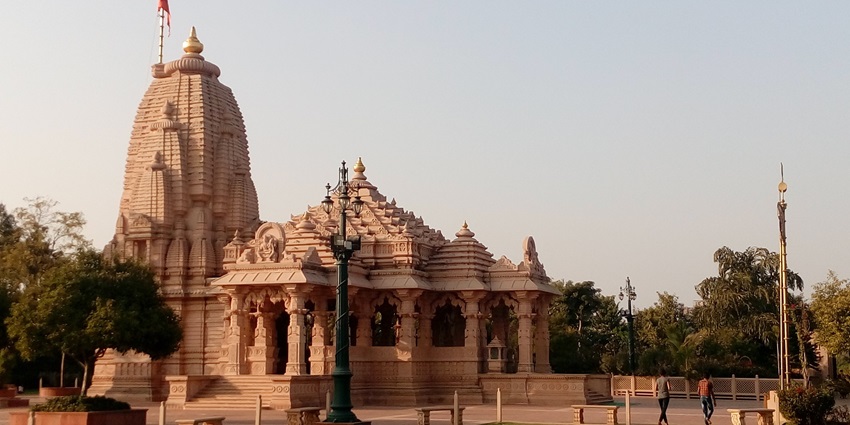
Photo: RikkyLohia / Pixabay / Image For Representation Only
Shri Laxminath Temple, one of the oldest religious structures in Bikaner, holds immense significance as a worship site dedicated to Vishnu and Lakshmi. The temple’s timeless architecture, featuring traditional carvings and sacred symbols, attracts both pilgrims and visitors interested in cultural exploration. The religious rituals performed here offer a deep connection to the local customs and traditions. Tourists visiting the temple gain insight into Bikaner’s spiritual roots and its importance to the people. It’s a revered site, often frequented for prayer and reflection.
Distance From The Fort: 4 km
Timings: 5:30 AM – 1 PM and 5 PM – 9 PM
Suggested Read: Things To Do In Bikaner
Where To Stay
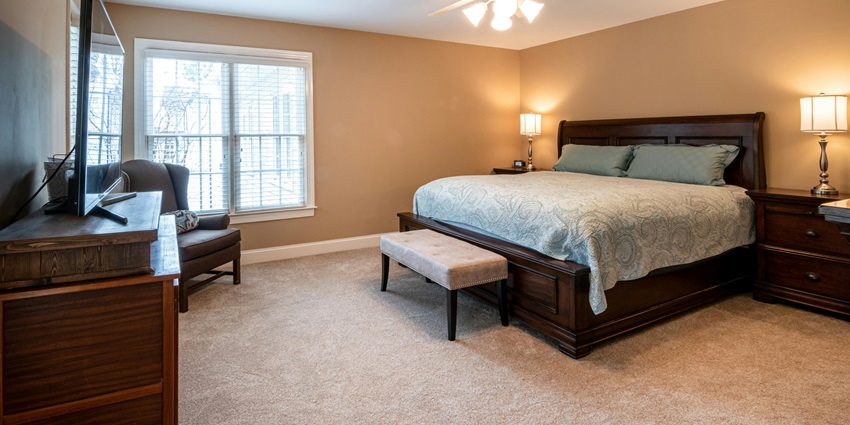
Photo: Curtis Adams / Pexels / Image For Representation Only
Bikaner has an array of accommodation options, with a focus on heritage hotels and luxurious stays. For a royal experience, properties like the Lallgarh Palace Hotel or Narendra Bhawan offer elegant rooms and traditional Rajasthani hospitality. For budget travellers, guesthouses provide affordable comfort with essential amenities. Here are some of the other recommendations near the fort: Hotel Bikaner, Hotel Raj Vilas Palace, and Hotel Jaswant Bhawan.
Where To Eat
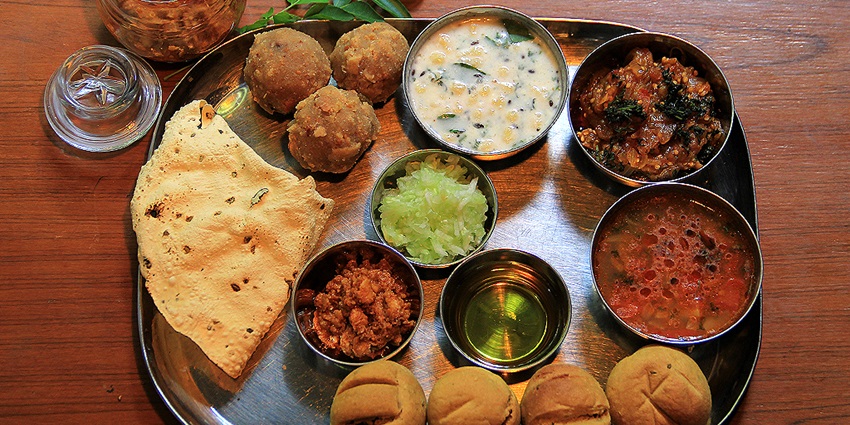
Photo: Niranjan.gohane / Wikimedia Commons
Bikaner’s culinary offerings highlight the best of traditional Rajasthani cuisine. For visitors of the fort, restaurants like Bhikharam Chandmal and Gallops Restaurant offer a delightful selection of regional dishes. Meals range from light snacks like Bikaneri Bhujia to hearty plates of Dal Baati Churma. Dining options around the fort vary from casual eateries to fine dining, with price points accommodating different budgets. Some other recommendations are: Aapni Haveli Restaurant, Masala Chowk Food Court, Shri Shri Ganesh Hotel, and many more.
Suggested Read: The Best Foods In Rajasthan
Best Time To Visit
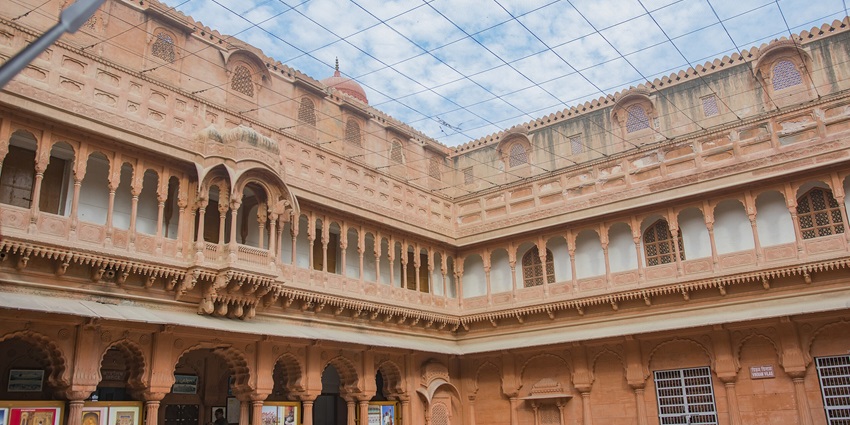
Photo: Souvik Sarkar / Wikimedia Commons
The ideal time to visit the fort and other attractions in Bikaner is during the cooler months, between October and March. During this period, the weather remains comfortable, making it easier to explore the historical sites and local markets. Temperatures during winter are pleasant, which enhances the sightseeing experience without the discomfort of the harsh summer heat. The monsoon season, though brief, also brings a mild respite. Planning a trip in advance ensures a smooth experience, especially during the winter peak tourist season.
Other Factors To Consider
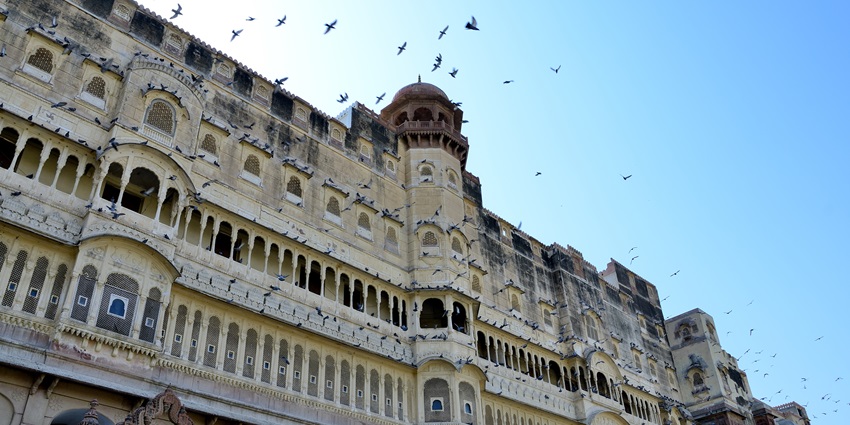
Photo: Sharvarism / Wikimedia Commons
Average Cost Of Trip
A trip to this fort can be tailored to different budgets, with costs varying depending on accommodation, dining, and transportation choices. On average, a three-day trip for one person may range from ₹6,000 to ₹10,000, including mid-range accommodation, meals, and local transportation. Travellers looking for a more luxurious experience will find higher costs, while budget-conscious visitors can explore economical options without sacrificing comfort.
Tips For Travellers
- Do visit the museum to understand the historical significance of the fort.
- Wear comfortable shoes, as the fort has multiple levels and large courtyards to explore.
- Book your tickets online during peak seasons to avoid long queues.
- Early morning visits are recommended to avoid the afternoon heat.
- Be respectful of local customs, especially at nearby religious sites.
Suggested Read: Places To Visit Near Bikaner For A Serene Getaway In The Golden Land
Junagarh Fort stands as a remarkable piece of Rajasthan’s regal past, inviting travellers to explore its intricate designs and fascinating history. From its ornate courtyards to the detailed craftsmanship of its interiors, this fortress offers a glimpse into the opulence of the bygone era. So, plan your visit with TripXL, ensuring a smooth and seamless booking process for your upcoming exploration of Rajasthan’s cultural gems.
Cover Photo: Priyanka Kumari Rai / Wikimedia Commons


 WhatsApp
WhatsApp
 Twitter
Twitter









